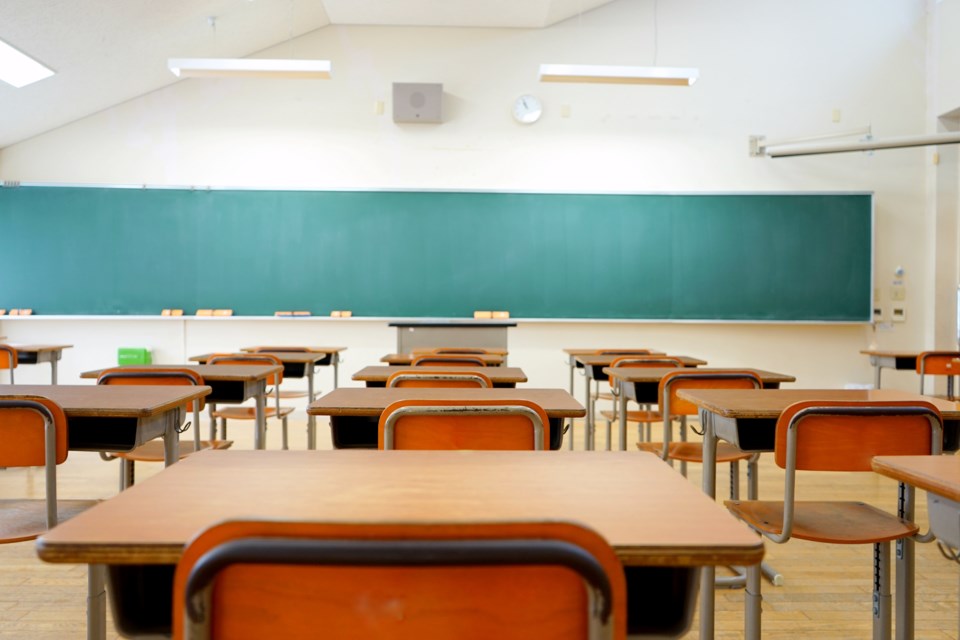MOOSE JAW — Roughly two-thirds of students in Prairie South School Division have a positive sense of belonging, while only one-third report moderate or high levels of anxiety, new data shows.
Prairie South conducted its annual OurSCHOOL survey this past spring, which it uses to set student wellness goals and targets for next year. All students in grades 4 to 12 were invited to participate in the survey, with 1,346 youths in grades 4 to 6 and 2,257 students in grades 7 to 12 taking part.
With data in hand, division administration presented the survey results during the June board meeting.
Amanda Olson, superintendent of learning, explained that this data is a “snapshot in time,” which means the results reflect how students were doing that day and not the entire year.
Sense of belonging
An average of 65.3 per cent of students in grades 4 to 6 reported having a positive sense of belonging this year, compared to 67 per cent last year, 68 per cent two years ago and 69.7 per cent three years ago, the data showed.
Conversely, this year’s average is below the provincial norm of 69 per cent and the Canadian norm of 71 per cent.
Meanwhile, an average of 59 per cent of youths in grades 7 to 12 reported having a positive sense of belonging this year, compared to 60 per cent last year, 61.3 per cent two years ago and 61.2 per cent three years ago.
This year’s average is equal to the provincial norm and one percentage point below the Canadian norm.
Teachers’ influence
An average of 76.3 per cent of students in grades 4 to 6 reported having a positive relationship with their teachers, compared to 80 per cent last year, 81.7 per cent two years ago and 83 per cent three years ago, the data showed.
Conversely, this year’s average is below the provincial and Canadian norms by roughly four percentage points.
Meanwhile, an average of 63.6 per cent of youths in grades 7 to 12 said they had a positive relationship with their teachers, compared to 65 per cent last year, 73.2 per cent two years ago and 74.7 per cent three years ago.
Conversely, this year’s average is below the provincial and Canadian norms by roughly one to two percentage points.
Anxiety
An average of 33.7 per cent of students in grades 4 to 6 said they had moderate to high levels of anxiety, compared to 33 per cent last year, 35.3 per cent two years ago and 32.6 per cent three years ago, the data showed.
This year’s average is above the provincial and Canadian norms by one to three percentage points.
Meanwhile, an average of 29 per cent of youths in grades 7 to 12 said they had moderate to high levels of anxiety, compared to 30 per cent last year, 30.7 per cent two years ago and 29.7 per cent three years ago.
This year’s average is below the provincial and Canadian norms by roughly three to four percentage points.
Administration’s comments
The division has had a strategic focus on addressing anxiety and mental wellness for several years while it has developed relationships with organizations like River Street Promotions (RSP) to support students better, said Olson.
For example, RSP provides schools with grants up to $1,500 for mental health-focused projects, with 19 locations accessing that money this year, she continued. Furthermore, the organization sponsors musicians at the Mae Wilson Theatre who perform and tell stories about their mental health journeys.
RSP has also worked with Journey to Hope and Blue Cross to sponsor online mental health conferences for students.
“Schools have (also) done their own strategic actions toward putting some tools in our students’ toolboxes and hopefully lowering those levels of anxiety,” said Olson.
Olson added that Prairie South will continue creating a culture of wellness, support students through the provincial education plan, focus on awareness and prevention, help students and families navigate external supports, research ways to enhance students’ sense of belonging and relationships with their teachers, provide learning opportunities for students and staff, and continue aligning with the board’s strategic plan.




